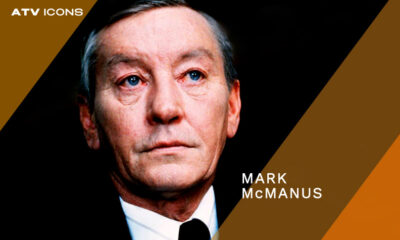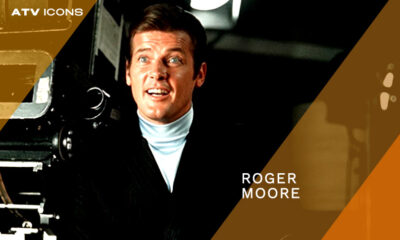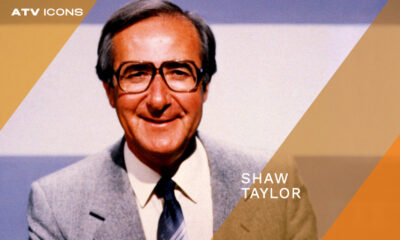Icons
ATV Icon: Stanley Baxter
The first in a series of ATV Icons to celebrate 70 years of ITV begins with Stanley Baxter…
Stanley Livingstone Baxter was born in Glasgow on 24 May 1926.
The son of an insurance manager, he grew up in a working-class family and was educated at Hillhead High School. His mother taught him acting, and Baxter made his first broadcast appearances as a child performer on BBC Scotland’s Children’s Hour.
During World War II he served as a Bevin Boy (coal miner) and then joined the British Army’s Combined Services Entertainment unit. In the military, he performed in Forces radio shows in Malaya, honing his comic and musical skills and forging friendships with fellow entertainers like Kenneth Williams.
After the war, Baxter returned to Glasgow and pursued a stage career. He spent three years at Glasgow’s Citizens’ Theatre (1946–1949), working initially as assistant stage manager and then moving into acting roles.
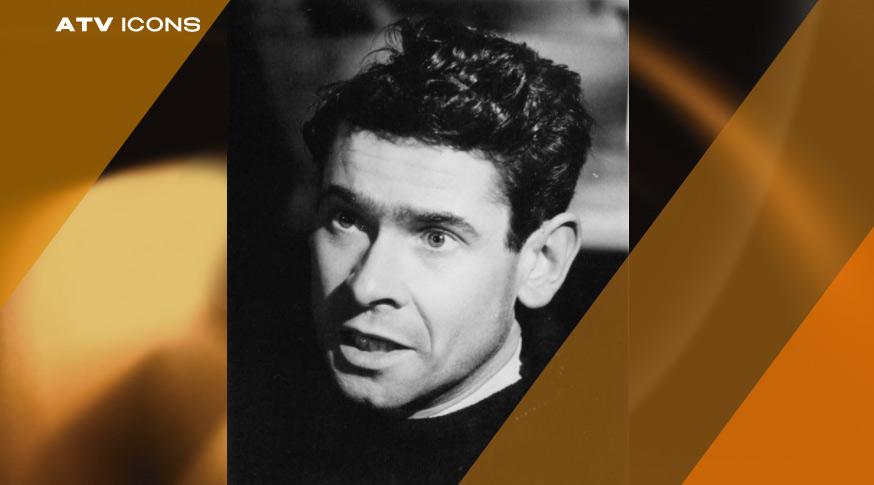
His first major role was a small part in Tyrone Guthrie’s celebrated 1948 production of The Three Estates at the Edinburgh Festival. In this period, he also co-starred on radio – for example with comedian Jimmy Logan – and became a popular pantomime performer. The Scottish theatrical firm Howard & Wyndham signed him for annual pantomimes at Glasgow’s Theatre Royal and for their summer “Half Past Eight” and later “Five Past Eight” variety revues; this made him a fixture of Scottish variety theatre in the 1950s.
In 1959 Baxter moved to London to expand into national theatre and television, but he returned repeatedly to stage roles. In the London West End, he appeared in comedies such as The Amorous Prawn. A major theatrical highlight came in 1969 when he starred in Joe Orton’s farce What the Butler Saw at the Queen’s Theatre in the West End, sharing the stage with Sir Ralph Richardson and Coral Browne.
Baxter also became famous in Scotland for his pantomime performances, often playing the “pantomime dame”. He regularly headlined Glasgow pantos, famously starring with fellow Scottish celebrities like Jimmy Logan, Angus Lennie and Una McLean. These Christmas seasons cemented his reputation as one of Scotland’s most beloved stage comedians. He continued to appear in theatre and pantomime through the 1980s, retiring from regular stage work in the mid-1990s.
Baxter appeared in numerous British comedy films in the 1950s and 1960s. Notable screen roles include the youthfully mischievous Geordie (1955), the World War II spoof Very Important Person (1961), and several farce comedies with actor James Robertson Justice: The Fast Lady (1962), Crooks Anonymous (1962), and Father Came Too! (1963). These films often cast Baxter as an eccentric or bumbling character, showcasing his gift for physical comedy and impersonation. (He also later supplied voice work, for example in the animated film The Thief and the Cobbler (1995).
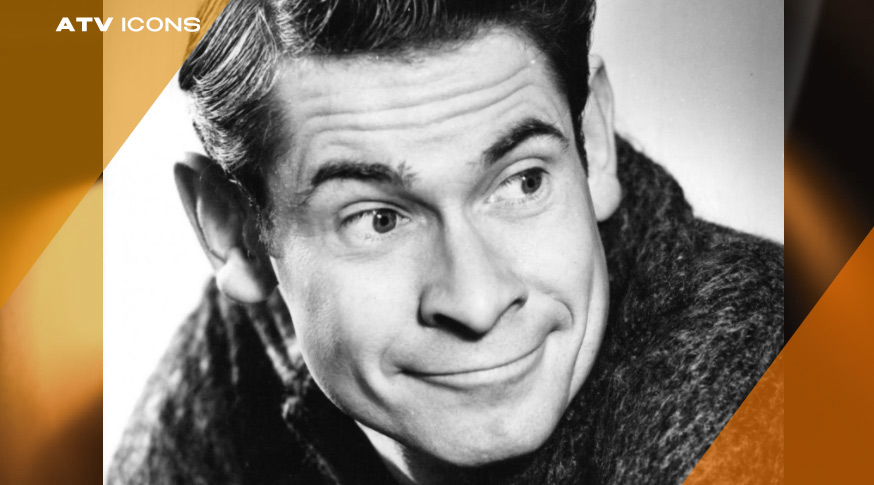
Stanley Baxter became a household name through television sketch and variety shows. He is best known for The Stanley Baxter Show, a series of comedy and musical parodies on BBC One that ran from 1963 to 1971.
Another landmark series was The Stanley Baxter Picture Show (LWT for ITV, 1972–75), which featured elaborate colourful sketches and parodies of film genres. In 1981 he produced a six-part series for LWT simply called The Stanley Baxter Series. In addition, Baxter starred in numerous hour-long TV specials in the 1970s and ’80s; in total eight one-hour specials were made for BBC and LWT between 1973 and 1986. These programs featured Baxter’s trademark impressionist humour and high production values.
Within these shows he became famous for his spot-on impersonations of public figures. In particular, he often lampooned Queen Elizabeth II, referring to her humorously as “the Duchess of Brendagh”. He also produced memorable comedy sketches like “Parliamo Glasgow,” a mock-Esperanto of Glasgow slang, and “Scotch Sketches.” Baxter’s ability to play multiple characters in rapid succession was a TV hallmark.
Aside from his own series, Baxter made many guest appearances. He appeared on The Goodies and other comedy programs such as a Christmas special of BBC Two comedy Rab C. Nesbitt and in 1977 he took part in Bing Crosby’s final Christmas special filmed in the UK at the ATV Elstree Centre for ITV, playing several roles including the ghost of Bob Hope’s ancestor and ‘Hudson’ from Upstairs Downstairs.
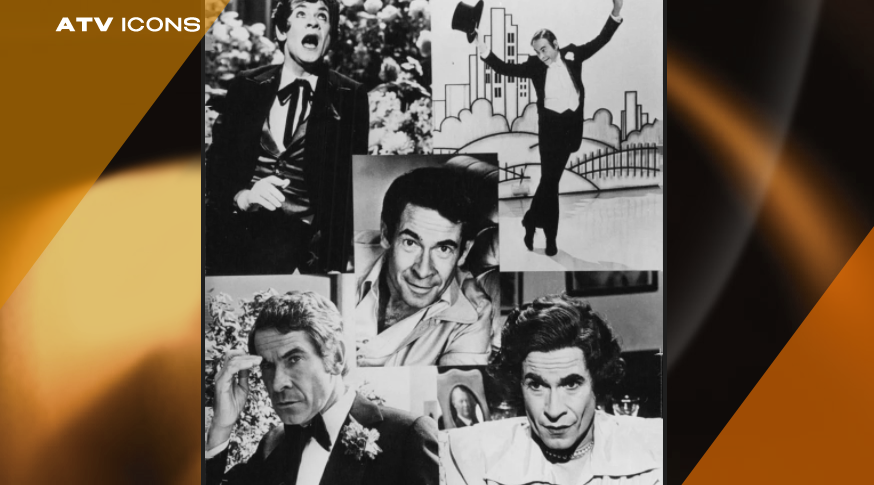
In the late 1980s he surprised many by taking the title role in the children’s series Mr. Majeika (TVS for ITV 1988–90), playing a bookish wizard-schoolteacher who uses magic in humorous ways, Baxter later said he did this TV role for financial reasons after his prime shows ended. He officially retired from regular performing in 1990, though he made a special one-off television return in 2008 with an ITV Christmas program reflecting on his career.
Beyond performance, Baxter authored several books. Many of these are humour books based on Glasgow dialect and culture, expanding on his TV routine “Parliamo Glasgow”. Titles include Stanley Baxter’s Bedside Book of Glasgow Humour and Parliamo Glasgow. In later years he occasionally worked in radio; in the 1960s he had his own BBC Scotland radio show, and in the 2000s he returned to BBC Radio 4 in series like Stanley Baxter Playhouse. In 2009 BBC Radio 2 aired The Stanley Baxter Story, a retrospective documentary introduced by comedian Eddie Izzard.
Stanley Baxter’s long career earned him numerous awards. He was an early recipient of BAFTA’s Light Entertainment award: for co-hosting the satirical BBC show On the Bright Side (1959) he won the BAFTA for Light Entertainment Performance. He later won two more BAFTAs in this category (1960 and 1975) for his own television work.
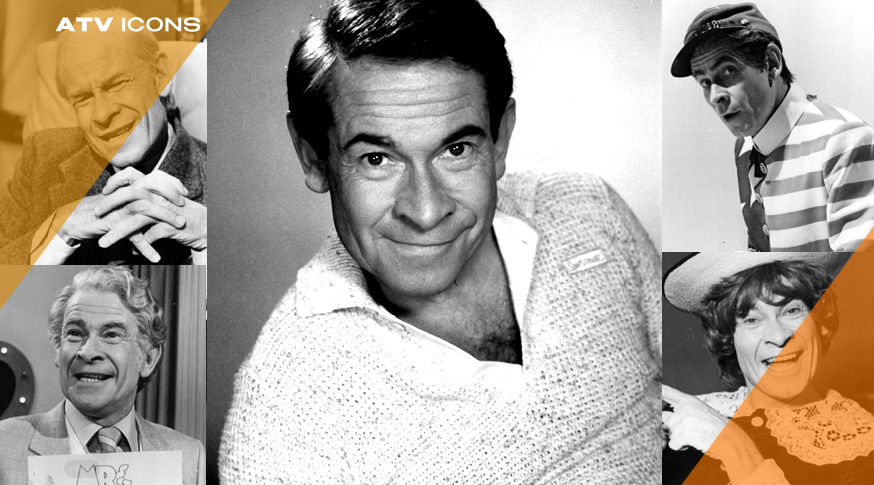
In 1997 he received the Lifetime Achievement Award at the British Comedy Awards and in 2008 he was honoured as “Camper of the Year” by The Oldie magazine for his enduring comic talent. In 2020 BAFTA Scotland presented him with an Outstanding Contribution Award, recognizing his impact on Scottish entertainment. Notably, Baxter was offered an OBE for services to entertainment but declined it.
Throughout his career, Baxter was praised as one of Britain’s most inventive sketch comedians and impressionists.
His blend of elaborate costumes, sharp impersonations and affectionate satire made him a beloved figure on stage and screen. He is widely regarded as a pioneer of British television comedy and remains a treasured entertainer in Scotland and beyond.
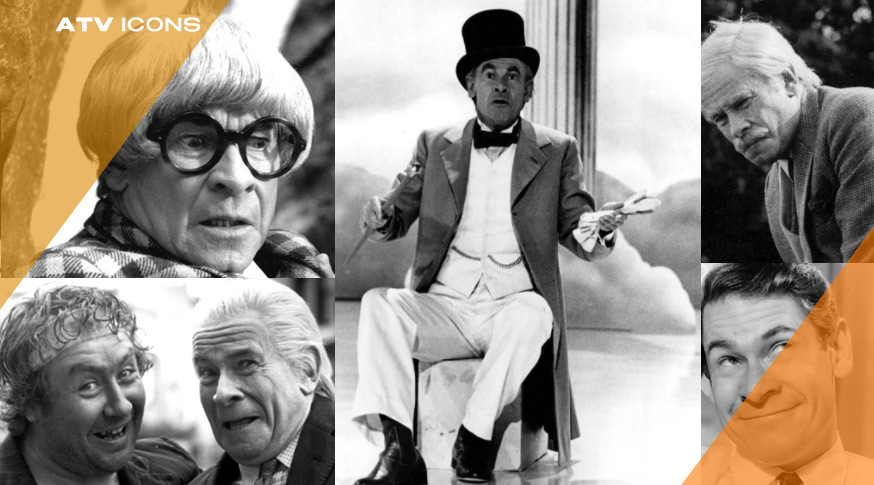
A collection of images from Staney’s BBC, LWT and TVS series are featured on this ATV Icons page



